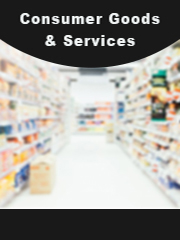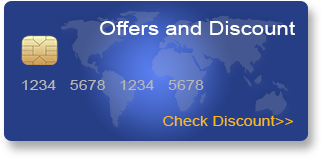TOP CATEGORY: Chemicals & Materials | Life Sciences | Banking & Finance | ICT Media

The After Sun Care Products market encompasses a range of skincare products designed to soothe, hydrate, and protect the skin after sun exposure. These products help reduce redness, inflammation, and dryness caused by UV radiation. Common formulations include creams, gels, lotions, and sprays infused with ingredients such as aloe vera, vitamin E, and antioxidants to repair sun damage and prevent premature aging.
The Global After Sun Care Products Market was valued at USD 2,444.81 million in 2023 and is expected to reach USD 2,970.63 million by 2029, growing at a CAGR of 3.30% during the forecast period.
Market expansion is driven by increasing awareness of sun damage, rising disposable incomes, and growing demand for organic and natural skincare products. Key markets include North America and Europe, where sun care awareness and skincare routines are more prominent.
Drivers:
Growing consumer awareness of sun damage and skin protection.
Rising disposable income, leading to increased spending on personal care products.
Increased outdoor recreational activities, including beach tourism and sports.
Growth in e-commerce, making after-sun care products more accessible.
Restraints:
High competition from alternative skincare products, such as general moisturizers.
Seasonal demand fluctuations, with higher sales in summer months.
Presence of counterfeit or low-quality products affecting consumer trust.
Opportunities:
Growing demand for organic and natural after-sun care products.
Expansion of distribution channels, including online retail and subscription services.
Innovations in product formulations, such as UV-damage repair and anti-aging properties.
Challenges:
Regulatory constraints on product ingredients and claims.
Rising costs of raw materials, impacting profit margins.
Market saturation in developed regions.
North America:
The North American market, led by the USA and Canada, holds a significant share due to high consumer awareness and a well-established personal care industry. Increasing demand for organic skincare and advanced sun protection drives market growth.
Europe:
Europe exhibits strong demand, particularly in countries like Germany, the UK, and France. The region’s strict skincare regulations encourage high-quality product offerings. Consumers favor dermatologically tested and cruelty-free formulations.
Asia-Pacific:
The Asia-Pacific region is experiencing rapid growth due to rising disposable incomes and a growing skincare-conscious population, particularly in China, Japan, and South Korea. The expanding beauty and wellness industry further supports market growth.
South America:
Brazil and Argentina lead the South American market, driven by a high prevalence of outdoor lifestyles and increasing skincare awareness. The market is still developing but presents opportunities for premium brands.
Middle East & Africa:
Rising temperatures and increased sun exposure contribute to demand in the Middle East and Africa. However, limited awareness and purchasing power in certain areas pose challenges for market expansion.
Key players in the After Sun Care Products market include:
What is the current market size of the After Sun Care Products Market?
As of 2023, the market was valued at USD 2,444.81 million and is projected to reach USD 2,970.63 million by 2029, growing at a CAGR of 3.30%.
Which are the key companies operating in the After Sun Care Products Market?
Major players include L'Oréal, P&G, Unilever, Clarins Group, Burt’s Bees, Beiersdorf, Amore Pacific, and AVON.
What are the key growth drivers in the After Sun Care Products Market?
Key growth drivers include increased awareness of sun damage, rising disposable incomes, expanding e-commerce channels, and growing demand for organic skincare products.
Which regions dominate the After Sun Care Products Market?
North America and Europe lead the market, while Asia-Pacific is the fastest-growing region.
What are the emerging trends in the After Sun Care Products Market?
Trends include the rise of organic and natural products, innovative formulations with anti-aging benefits, and the expansion of online retail channels.
Key Benefits of This Market Research:
Key Reasons to Buy this Report:
Customization of the Report
In case of any queries or customization requirements, please connect with our sales team, who will ensure that your requirements are met.
Note: this report may need to undergo a final check or review and this could take about 48 hours.
Chapter Outline
Chapter 1 mainly introduces the statistical scope of the report, market division standards, and market research methods.
Chapter 2 is an executive summary of different market segments (by region, product type, application, etc), including the market size of each market segment, future development potential, and so on. It offers a high-level view of the current state of the After Sun Care Products Market and its likely evolution in the short to mid-term, and long term.
Chapter 3 makes a detailed analysis of the Market's Competitive Landscape of the market and provides the market share, capacity, output, price, latest development plan, merger, and acquisition information of the main manufacturers in the market.
Chapter 4 is the analysis of the whole market industrial chain, including the upstream and downstream of the industry, as well as Porter's five forces analysis.
Chapter 5 introduces the latest developments of the market, the driving factors and restrictive factors of the market, the challenges and risks faced by manufacturers in the industry, and the analysis of relevant policies in the industry.
Chapter 6 provides the analysis of various market segments according to product types, covering the market size and development potential of each market segment, to help readers find the blue ocean market in different market segments.
Chapter 7 provides the analysis of various market segments according to application, covering the market size and development potential of each market segment, to help readers find the blue ocean market in different downstream markets.
Chapter 8 provides a quantitative analysis of the market size and development potential of each region and its main countries and introduces the market development, future development prospects, market space, and capacity of each country in the world.
Chapter 9 introduces the basic situation of the main companies in the market in detail, including product sales revenue, sales volume, price, gross profit margin, market share, product introduction, recent development, etc.
Chapter 10 provides a quantitative analysis of the market size and development potential of each region in the next five years.
Chapter 11 provides a quantitative analysis of the market size and development potential of each market segment (product type and application) in the next five years.
Chapter 12 is the main points and conclusions of the report.
Frequently Asked Questions ?
